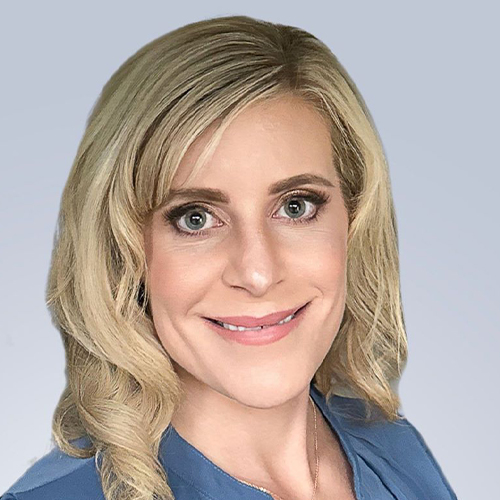For the nearly 30 million Americans with limited English proficiency (LEP), language barriers can have dangerous (and even deadly) consequences in healthcare settings — miscommunicated care instructions, misunderstood patient presentations, and power inequities between patients and medical professionals.
Eliminating potential obstacles that hinder outcomes for LEP communities are often amongst the easiest to address and improve, but are often deprioritized. But with focus and experience, great improvements in equity and access are possible.
Companies like United Language Group (ULG) — a leading healthcare language and culture solutions provider — partner with organizations to provide comprehensive language access programs, helping providers foster trust, improve quality of care, and ensure patient safety.

Nic Mcmahon
Chief Executive Officer, ULG
Nic McMahon, ULG’s CEO, emphasizes: “As populations continue to grow more diverse, providing meaningful language access will prove vital for organizations looking to better educate patients, improve patient retention, reduce readmittance rates, build trust within the communities they serve, and improve health outcomes.”
The importance of equitable health access
When patients have no language access support, it can lead to negative (even tragic) end results. For example, Maru Lozano is the senior manager of communications translation at AltaMed, one of the nation’s largest Federally Qualified Health Centers (FQHC), where services are provided to over half a million of Los Angeles and Orange County’s most medically underserved communities. As it relates to patient safety, she says, “the lack of translation or having poorly delivered language services can be life-threatening.”
Lozano also mentioned the following example of what can happen without conscientious translation: At an L.A. County hospital, a Spanish-speaking patient was given medication with English instructions to take a pill “once daily” (rather than to take “one daily”) and interpreted “once” as the number 11 because once is also “11” in Spanish — and thus ingested 11 pills in one go. This resulted in the patient’s death.
Additionally, language barriers give rise to power inequities between patients and medical professionals. Lozano pointed to an instance where she was a medical interpreter. A doctor was communicating with a patient in an abusive manner. Thankfully, she as the qualified interpreter was able to pause the situation and address the issue.

Leslie Iburg
Director of Healthcare Accounts, ULG
“Ensuring all patients are treated equitably and with dignity is a priority that we share with our healthcare partners, and it’s at the heart of everything we do in language services,” said Leslie Iburg, director of healthcare accounts at ULG.
An effective, multilayered solution
Healthcare organizations have several layers of need in terms of effectively communicating with diverse patients and there’s no room for error. “In a hospital or clinical setting, there’s no time for delays,” Iburg stressed. “Patients and providers must be able to communicate clearly and effortlessly, and ensure everyone understands the information being shared.”
The first layer healthcare organizations must address is ensuring language support is easily accessible at all points of the healthcare journey, and it’s readily available across all modes and formats of communication. This is critical for ensuring quality care and avoiding costly delays. Iburg shared, “Seamless language support is key to facilitating clear and meaningful interactions between patients and providers. It means offering written translations, accessible/alternate formats, as well as access to an interpreter by phone, video, or in person. It’s also important to note that someone may need support for both language and accessibility purposes. However, every individual knows their own needs best, and organizations should provide information in each patient’s preferred language and format as much as possible.”
The next layer is cultural relevance, which ULG’s approach to language services is highly attuned to in healthcare settings — taking into consideration differing expectations and establishing a genuine connection with the community to foster effective communication. ULG can help support organizations in cultural competence when they’re serving a multicultural population by identifying cultural drivers, communication styles, and channel preferences (whether that’s texting, phone calls, or emails in the patient’s language of choice).
Technology tools like AI and machine translations, such as Google Translate, can be helpful for instant, literal translations, but may fail to convey this cultural relevance and context that is critical for effective communication in a healthcare setting. Furthermore, certain open AI tools also may not comply with HIPAA and PHI regulations, which can pose additional security risks.
Therefore, when translating sensitive healthcare information, it’s important to partner with a language service provider like ULG that is HITRUST-certified and understands how to deploy healthcare-specific AI solutions that drive efficiency without decreasing patient engagement and risking confidentiality. In addition, a language solution provider like ULG should also provide guidance and support around mandated regulations like Section 1557, which requires accessible healthcare information in the patient’s preferred language and involvement of qualified linguists for translation accuracy.
In meeting these regulations, healthcare providers must keep in mind the final layer of effective language support: patient satisfaction. Research indicates that overcoming language barriers results in better healthcare interactions and outcomes, meaning more empowered patients. A systemic review of 33 studies analyzing the “impact of patient-physician non-English language concordance on quality of care and outcomes” found that 76% “of the studies demonstrated that at least one of the outcomes assessed was better for patients receiving language-concordant care.” Those outcomes included quality of care, satisfaction with the care and the associated communication, medical understanding, and mental health.
Ultimately, ULG’s goal is to help healthcare organizations improve access to care, ensure patient safety, and provide a seamless connection for both sides.
“We want to alleviate the burden placed on healthcare organizations when it comes to accessibility challenges and staffing shortages by delivering language solutions that give end users an extra level of personalized service,” McMahon said. “ULG invests in technology combined with human healthcare expertise around language and culture, to deliver the unique balance of speed, quality, and efficiency that allows healthcare providers to achieve equitable outcomes for their LEP communities.”
To learn more, visit UnitedLanguageGroup.com/healthcare


